With its unique flavor profile, dill is a staple in many kitchens, especially for those who enjoy experimenting with different herbs and spices. But what if you’re out of dill or want to try something different? No worries! Here’s an extensive list of 35 substitutes for dill weed. Whether you’re making a salad, soup, or any other dish, these alternatives will ensure your cooking never lacks flavor.
This post contains affiliate links.
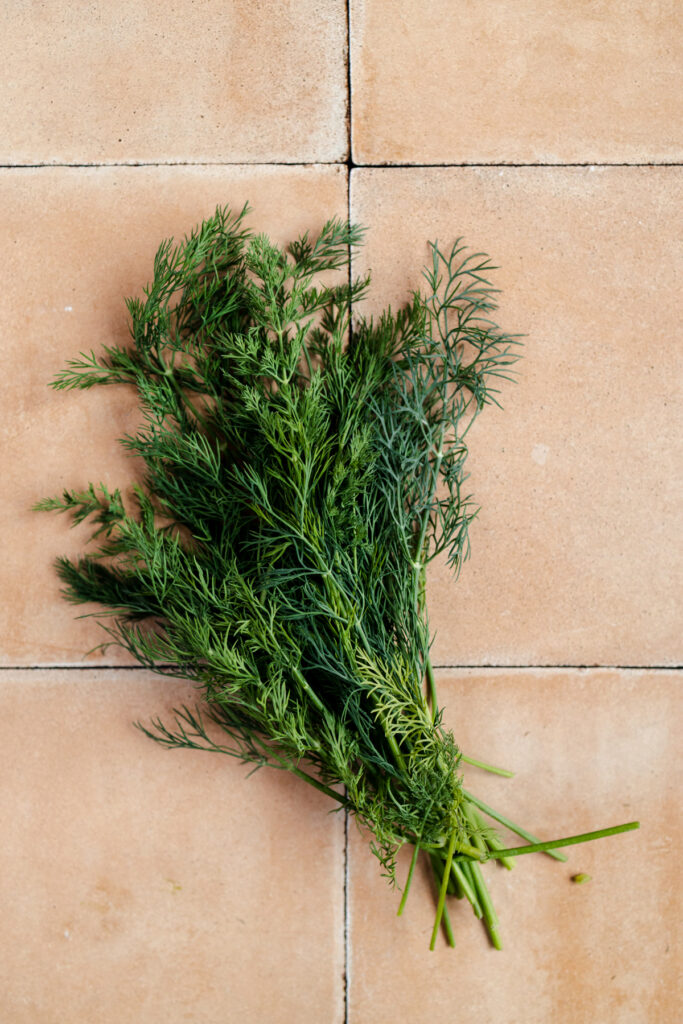
About Dill Weed
Dill weed, known scientifically as Anethum graveolens, has a history as rich and varied as its flavor. Originating in the Mediterranean and Western Asia, dill has been a culinary and medicinal staple for thousands of years.
Ancient Egyptians, Greeks, and Romans used it for its therapeutic properties, particularly for aiding digestion and as a sleep-inducing agent. In the culinary world, dill’s popularity spread across Europe and later to the Americas, becoming a versatile ingredient in a myriad of dishes.
The taste of dill weed is distinct and hard to miss. It has a fresh, slightly sweet flavor with hints of anise and lemon, making it a favorite in the culinary world. The feathery leaves of dill weed are used to enhance the flavor of various dishes, including soups, salads, roasted and pickled vegetables.
What food is it traditionally used in?
Dill weed, known for its light and feathery texture, is traditionally used in a variety of cuisines. It’s a staple in Eastern European, Scandinavian, and Mediterranean dishes. You’ll often find it in recipes like potato salad, pickles, salads, and soups.
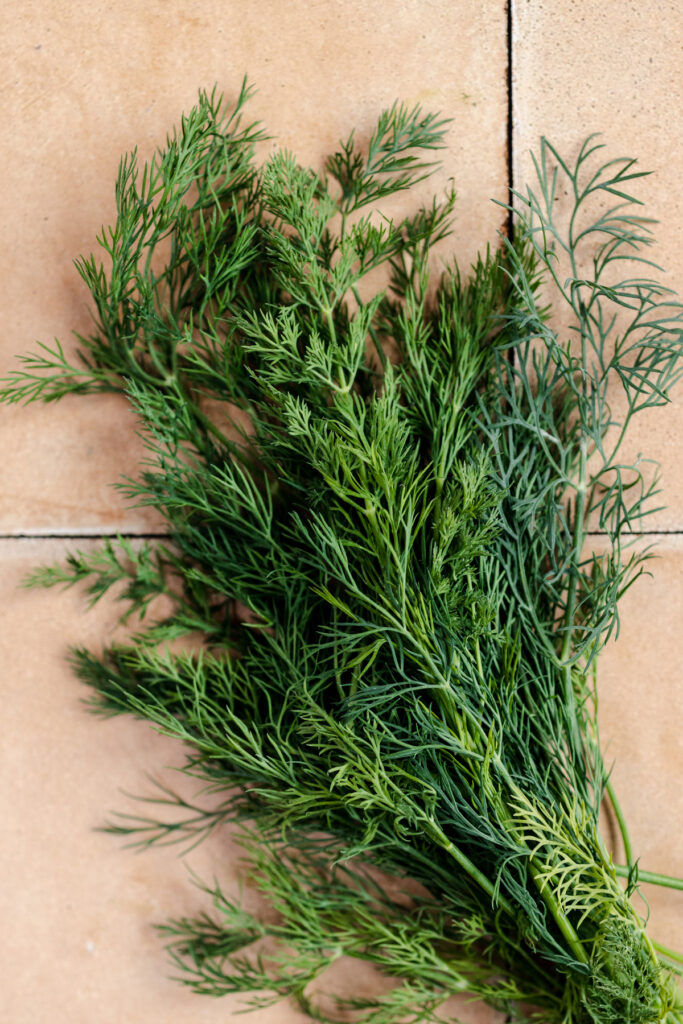
What are the health benefits of dill weed?
Dill weed is not just a flavor enhancer; it’s also packed with health benefits. It is a good source of vitamin C and manganese. Consumption of adequate vitamin C is associated with improved mental health, specifically depression and anxiety.
Dill is rich in antioxidants – flavonoids, terpenoids, and tannins. It has been shown to have anti-cancer and anti-aging potential.
Dill weed is also known for its calming and anti-inflammatory properties, contributing positively to mental health by reducing anxiety and stress.
Dried Vs. Fresh Dill
When it comes to dill, you can use it both fresh and dried, but they have different flavor intensities. Fresh dill is more aromatic and less concentrated, whereas dried dill offers a stronger, more condensed flavor. The choice between fresh and dried often depends on the recipe and your taste preference.
A good rule of thumb is to use a 3:1 ratio. Three parts fresh dill is roughly equivalent to one part dried dill.
The List: 35 Best Dill Substitutes
Here is a comprehensive list of the best dill substitutes for your recipe. From more subtle fresh herbs to dried herbs with bold flavor to flavorful seeds.
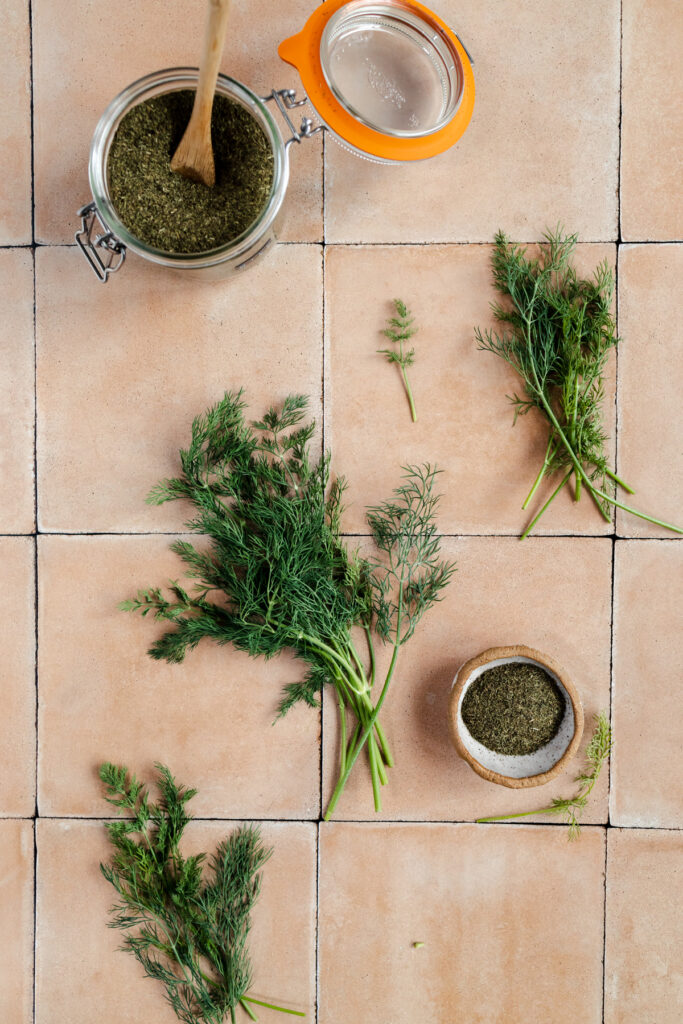
- Fresh Dill Weed: Fresh dill has a delicate, grassy flavor with a hint of anise and lemon. It’s a classic in Scandinavian and Eastern European cuisines, commonly used in dishes like potato salads and dill pickles. Its unique taste adds a fresh, herby note to any dish. This is the perfect substitute for dried dill.
- Dried Dill: Dried dill leaves offer a more concentrated flavor than their fresh counterpart. It’s ideal for dishes that require cooking for longer periods, like stews and braised dishes. Dried dill is often used in Middle Eastern and Mediterranean cuisines. To keep the flavor of dill, dried dill is the best substitute for fresh dill.
- Dill Seeds: Dill seeds provide a slightly more potent and concentrated dill flavor compared to the leaves, with a hint of caraway-like taste. They’re often used in pickling, bread-making, and spice blends, especially in Eastern European and Scandinavian cuisines. Their distinct, warm flavor makes them a great addition to vegetable dishes and stews, bringing a depth that complements the ingredients’ natural flavors.
- Fresh Tarragon: Fresh tarragon has a bittersweet taste with a distinctive anise-like flavor. It’s a staple in French cuisine, often used in sauces like Béarnaise. Tarragon adds a unique, aromatic touch to any meal.
- Dried Tarragon: Dried tarragon retains the anise-like flavor but is more potent than the fresh variety. It’s best used sparingly in dishes like soups, stews, and in spice blends. Dried tarragon is a common ingredient in many European dishes.
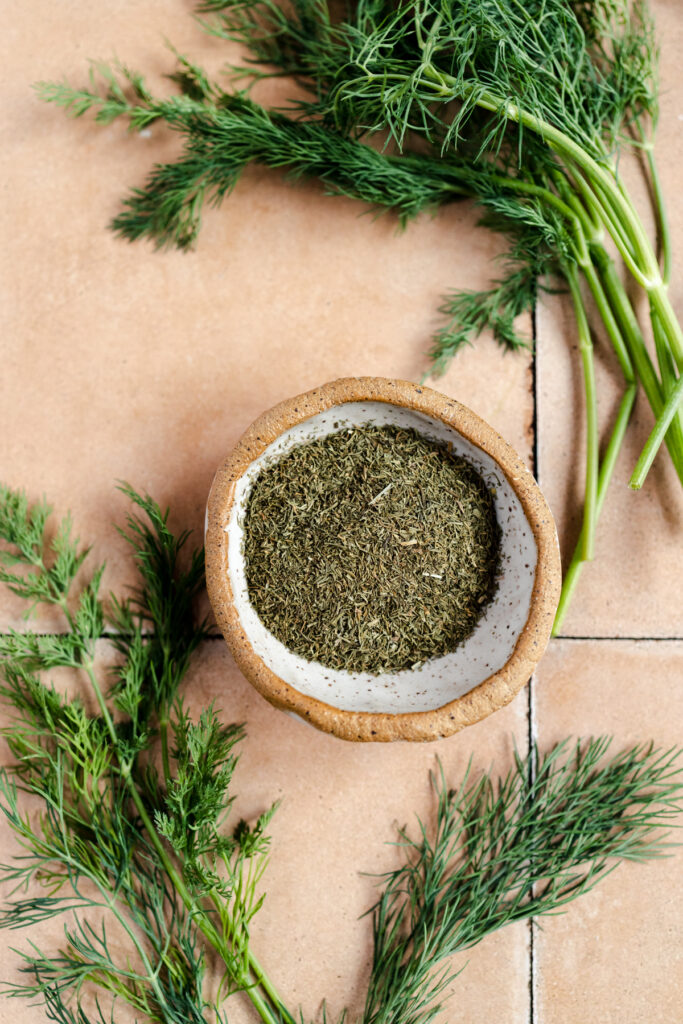
- Fresh Curley Parsley: Fresh curly parsley has a mild, slightly peppery flavor. It’s widely used in European and Middle Eastern cuisines as a garnish and flavor enhancer in soups, salads, and meat dishes. Its bright, herbaceous taste adds a fresh element to meals.
- Fresh Italian Parsley: Fresh Italian parsley, or flat-leaf parsley, has a more robust flavor than curly parsley. It’s a staple in Italian cooking, used in dishes like pasta, marinades, and sauces. Its clean and peppery taste complements a wide range of dishes.
- Dried Parsley: Dried parsley offers a more muted flavor than fresh parsley. It’s commonly used in spice blends, dry rubs, and as a seasoning for roasted or grilled veggies. Dried parsley can add a subtle herby note to dishes.
- Fresh Chervil: Fresh chervil has a delicate flavor reminiscent of a mild tarragon with hints of parsley. It’s a key herb in French cuisine, often used in salads and soups. Chervil’s light, anise-like flavor brings a subtle elegance to dishes.
- Dried Chervil: Dried chervil, while less common, provides a slightly stronger flavor than its fresh counterpart. It’s excellent in herb mixtures for soups and stews, adding a mild, slightly anise flavor that is less intense than tarragon.
- Fresh Basil: Fresh basil is sweet and peppery, with a subtle minty undertone. A cornerstone of Italian cuisine, it’s essential in dishes like pesto, caprese salad, and Margherita pizza. Basil adds a fresh, aromatic quality to food.
- Dried Basil: Dried basil has a more concentrated flavor than fresh basil. It works well in cooked dishes like sauces, soups, and stews, where it imparts a warm, slightly sweet taste. Dried basil is a key ingredient in many Mediterranean recipes.
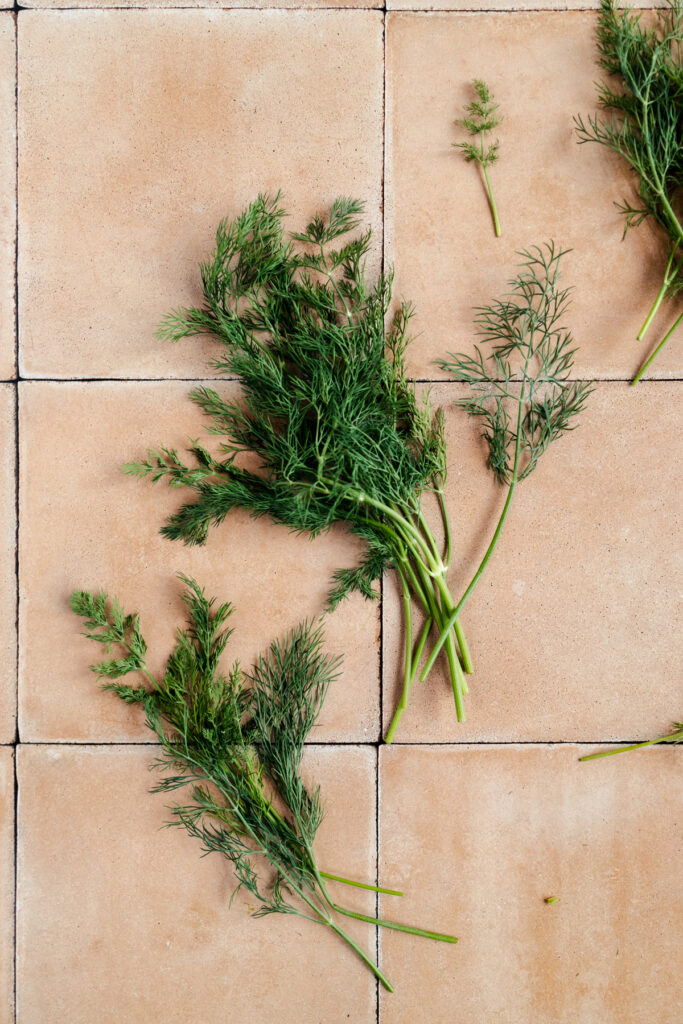
- Fresh Rosemary: Fresh rosemary has a strong, pine-like aroma and a woody, peppery flavor. It’s commonly used in Mediterranean cuisine, particularly with roasted vegetables and breads. Rosemary adds a bold, aromatic touch to dishes.
- Dried Rosemary: Dried rosemary is more concentrated and less piney than fresh rosemary. It’s excellent for longer cooking processes, like stews and roasts, where it imparts a robust, earthy flavor. Dried rosemary is a staple in Italian, French, and American cooking.
- Fresh Thyme: Fresh thyme has a subtle, earthy taste with lemony and minty notes. It’s versatile in many cuisines and is used in roasting foods, soups, and vegetable dishes. Thyme adds a delicate, savory element to meals.
- Dried Thyme: Dried thyme offers a more intense flavor than fresh thyme. It’s ideal for slow-cooked dishes, where it imparts a warm, earthy taste. Dried thyme is commonly used in Mediterranean, Italian, and French cuisines.
- Fresh Mint: Fresh mint is known for its cool, refreshing taste. It’s widely used in Middle Eastern and Southeast Asian cuisines, in dishes like tabbouleh, chutneys, and spring rolls. Mint adds a bright, fresh flavor to both sweet and savory dishes.
- Dried Mint: Dried mint has a more concentrated flavor than fresh mint. It’s commonly used in teas and Middle Eastern dishes. Dried mint adds a sweet, aromatic quality to dishes.
- Celery Greens: Celery greens, with their mild, slightly bitter flavor, are an excellent addition to salads, soups, and stews. They bring a subtle depth to plant-based dishes, complementing other vegetables and legumes beautifully.
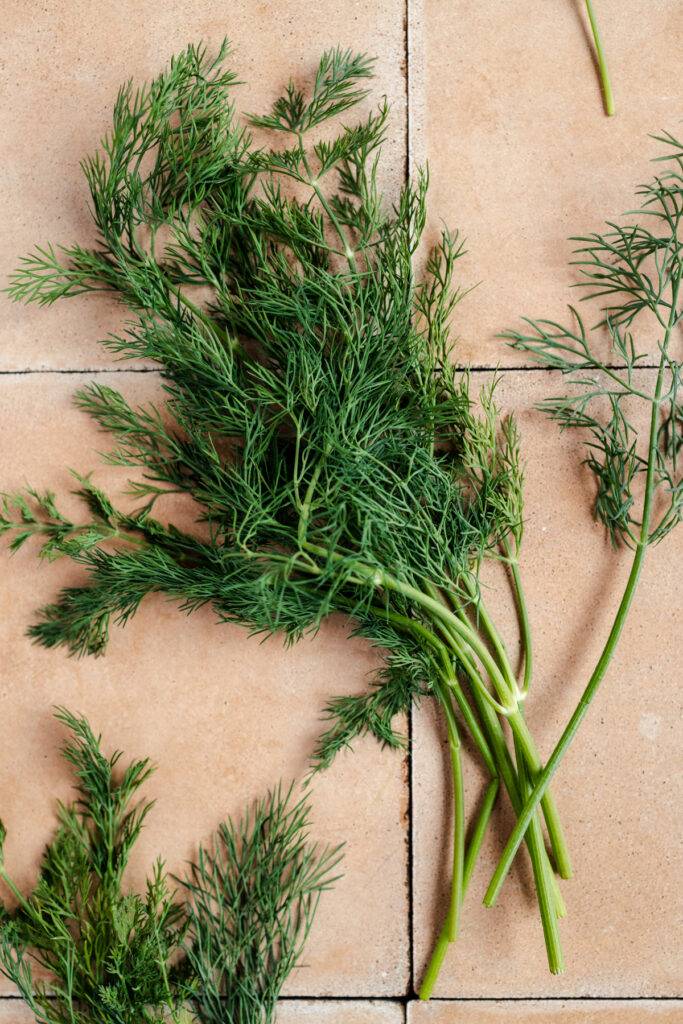
- Celery Seeds: Celery seeds have a bold, earthy flavor with a hint of bitterness. They are great in spice blends, pickling, and as a seasoning in salads and dressings, adding a complex flavor profile to various dishes.
- Fennel Bulb: The fennel bulb has a crisp texture and a sweet, anise-like flavor. It’s widely used in salads, braised dishes, and soups. The fennel bulb adds a refreshing and slightly sweet note to dishes, enhancing the overall flavor profile.
- Fresh Fennel Fronds: Fresh fennel fronds have a delicate, slightly sweet licorice flavor, similar to dill. They are excellent for garnishing, in salads, and in sauces. Their feathery texture and unique taste make them a visually appealing and flavorful addition. Fresh fennel greens resemble dill weed, so if you are looking to garnish a dish, this would be the best choice for making it visually similar.
- Fennel Seeds: Fennel seeds offer a potent, sweet licorice flavor. They are commonly used in spice mixes, breads, and seasoning blends. Fennel seeds add a warm, aromatic quality to dishes.
- Anise Seeds: Known for their distinct licorice-like flavor, are a small but mighty ingredient in various global cuisines. They offer a sweet, slightly spicy taste with a subtle hint of bitterness. Anise seeds are commonly used in baking, such as in breads and cookies, and are also a key component in spice mixes. Their unique flavor profile is particularly well-suited for sweet and savory dishes alike, adding a warm, aromatic quality that enhances the overall taste experience.
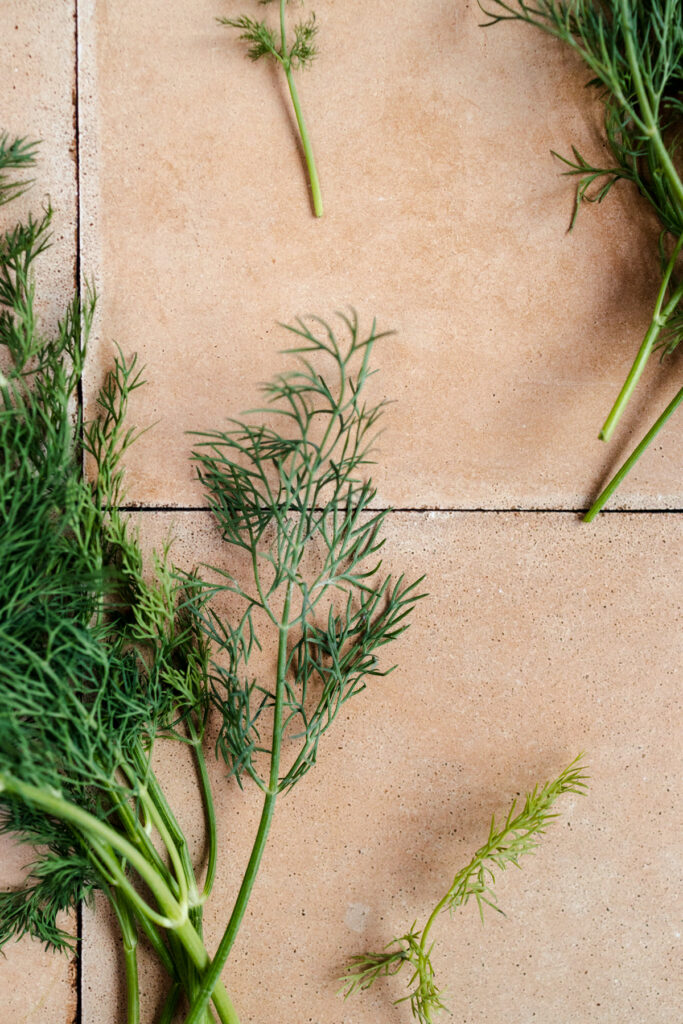
- Fresh Chives: Fresh chives have a mild, onion-like flavor. They are perfect for garnishing, in salads, and in dressings. Chives add a subtle yet distinct flavor, enhancing the overall taste of a dish without overpowering other ingredients.
- Dried Chives: Dried chives provide a more muted onion-like flavor compared to their fresh counterpart. They work well in dips, dressings, and as a seasoning in various dishes, adding a gentle hint of flavor.
- Fresh Cilantro: Fresh cilantro has a bright, citrusy flavor with a hint of pepperiness. It’s a staple in many cuisines, including Mexican and Asian. It is commonly used in salsa, guacamole, curries, and soups. Cilantro adds a fresh, vibrant taste to dishes.
- Coriander Seeds: These seeds, which come from the same plant as cilantro but offer a vastly different flavor, have a warm, nutty, and citrusy profile. Common in South Asian, Middle Eastern, and Mediterranean cooking. They are used in spice mixes, curries, and a large variety of other dishes. Coriander seeds add a subtly sweet and spicy note to recipes, enhancing the overall taste with their unique aromatic qualities.
- Fresh Oregano: Fresh oregano, a staple in Mediterranean and Mexican cuisines, offers a robust, earthy flavor with notes of pepper and mint. It enhances tomato sauces and grilled foods with its aromatic, spicy touch. Fresh oregano’s leaves add a vibrant, herbaceous element to dishes.
- Dried Oregano: Dried oregano, more intense than fresh, has a sharp, earthy taste. Essential in Italian and Greek recipes, it’s perfect for seasoning blends and stews. Its hearty flavor stands up to long cooking, adding a savory depth to dishes.
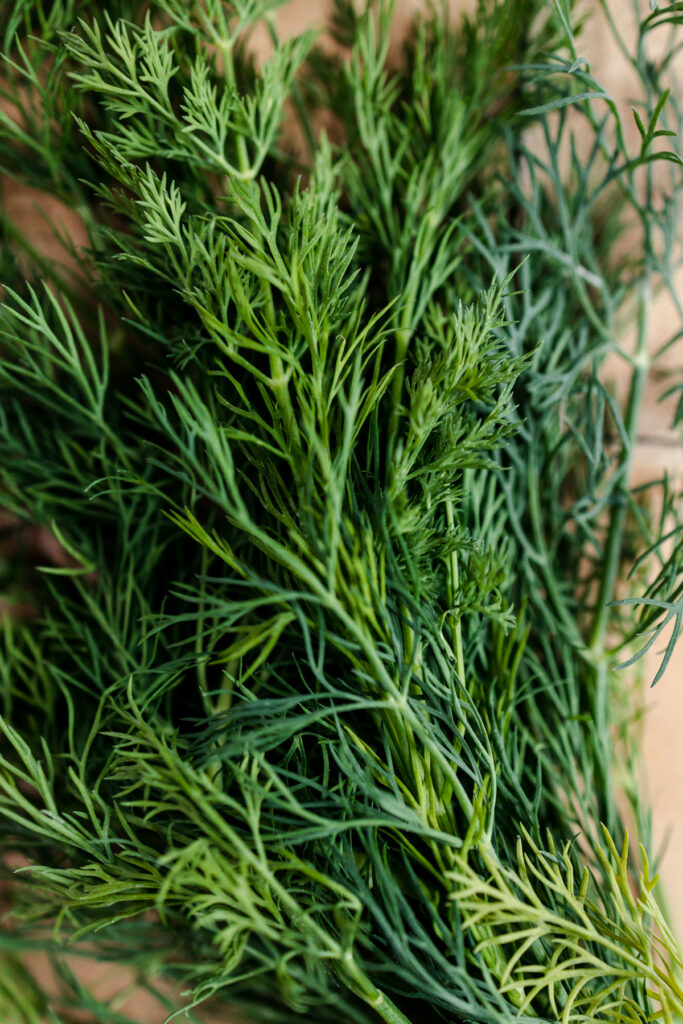
- Bay Leaf: Bay leaves have an herbal and slightly floral flavor. They are commonly used in soups, stews, and braises, imparting a subtle yet complex flavor to the dish. Bay leaves are a key ingredient in bouquet garni and other herb blends.
- Caraway Seeds: Caraway seeds offer an earthy, slightly peppery taste with a hint of citrus. They are great in breads, soups, and as a seasoning for vegetables. Caraway seeds add a distinct and aromatic flavor to dishes.
- Celery Seeds: Celery seeds have a strong, savory flavor with a hint of bitterness. They are excellent in salad dressings, spice blends, and for flavoring vegetable-based soups and stews. Celery seeds bring a unique depth to dishes.
- Fresh Garlic: Fresh garlic has a pungent, spicy flavor that mellows when cooked. It’s a versatile ingredient, used in virtually every cuisine in a variety of dishes, from stir-fries to sauces. Garlic adds a robust flavor to dishes.
- Garlic Powder: Garlic powder offers a more concentrated garlic flavor, with a slightly sweeter taste. It’s great for seasoning, in spice blends, and in dishes where a smooth texture is desired. Garlic powder enriches the flavor profile of any dish.
FAQ
If you don’t have dill, you can use fresh fennel fronds, tarragon, or parsley as a substitute. Fennel fronds have a similar anise-like flavor. Tarragon and parsley offer a fresh, herby quality that can mimic dill’s characteristics in most dishes.
In terms of taste similarity, fennel fronds are the closest to dill, owing to their delicate, slightly sweet licorice flavor. This makes them an excellent alternative in recipes calling for dill, especially in dishes like salads, veggies, and dressings.
Mint can be a good substitute for dill in certain dishes, especially those where a fresh, herby presence is desired. It works well in salads and yogurt-based sauces, offering a refreshing and slightly different flavor profile.
Final Words
While dill has a unique flavor that’s hard to replicate exactly, there are several herbs and vegetables like fennel fronds, tarragon, parsley, and mint that can serve as effective substitutes in various dishes. Each of these alternatives not only offers its own unique set of flavors but also brings a range of health benefits. Experimenting with these substitutes can enhance your culinary experience, contributing to the diversity of your meals and overall well-being.
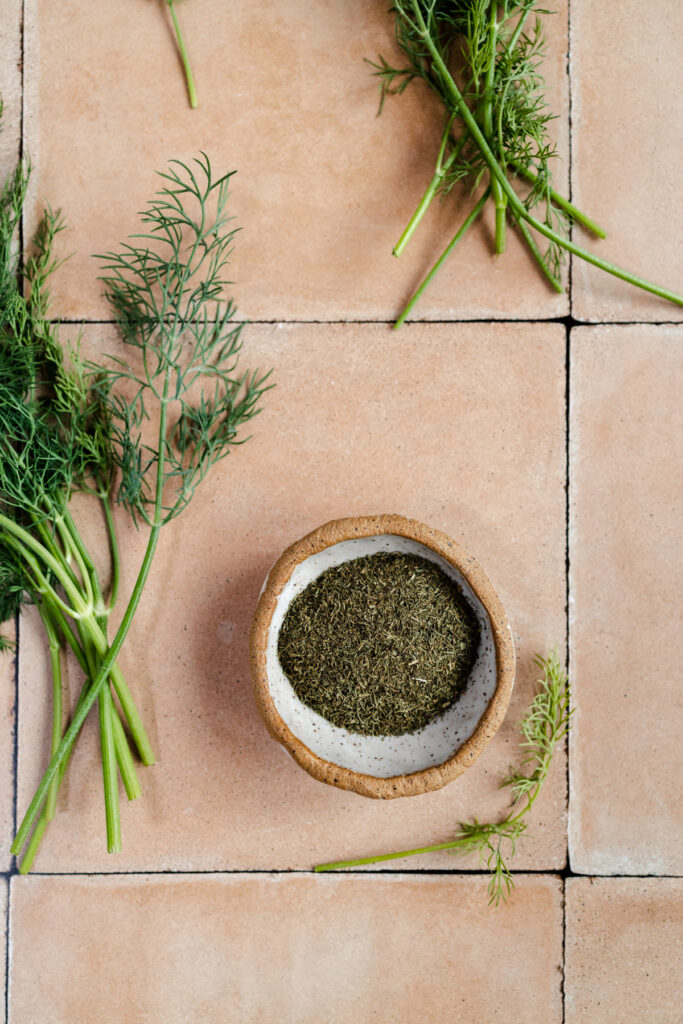
This post may contain affiliate links, meaning I’ll receive a commission if you purchase through those links at no extra cost to you. Please read our full disclosure for more information. Thank you for supporting Raepublic.

Great info. Thanks.
Wonderful!